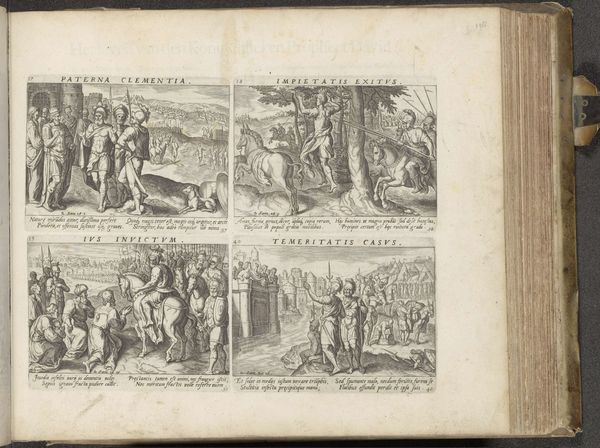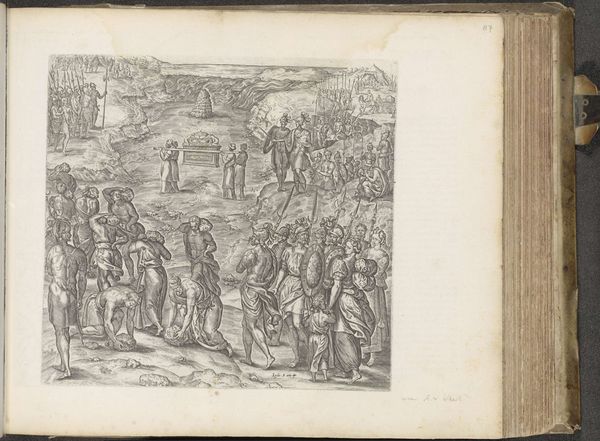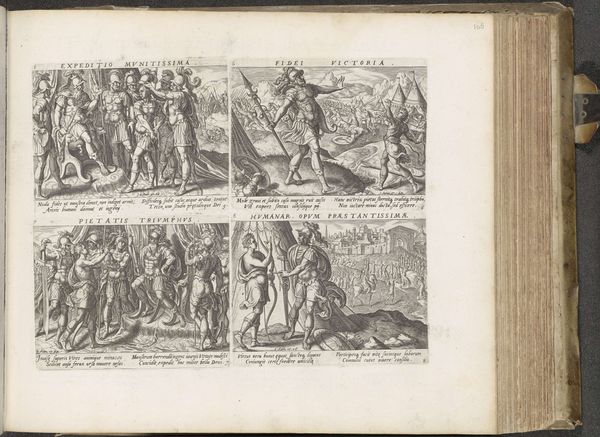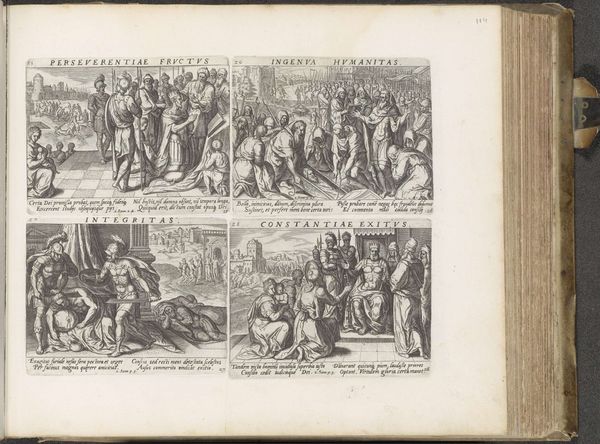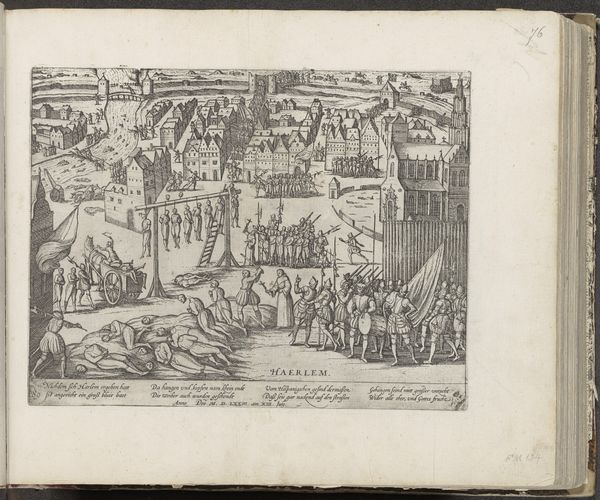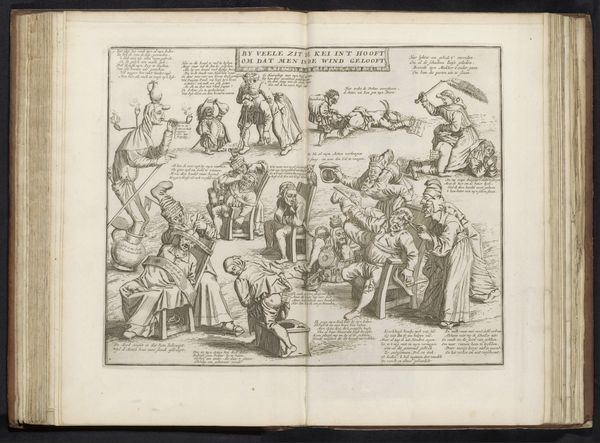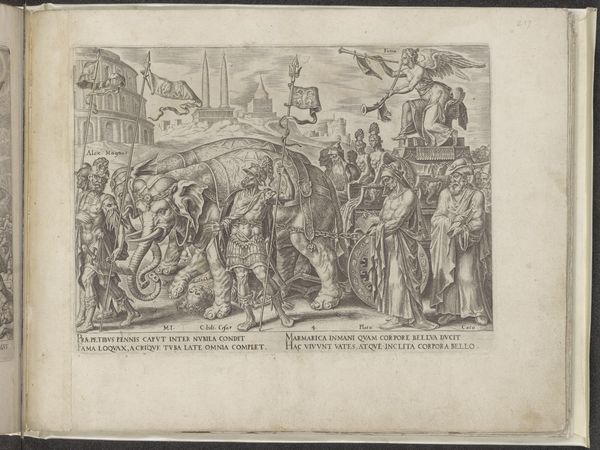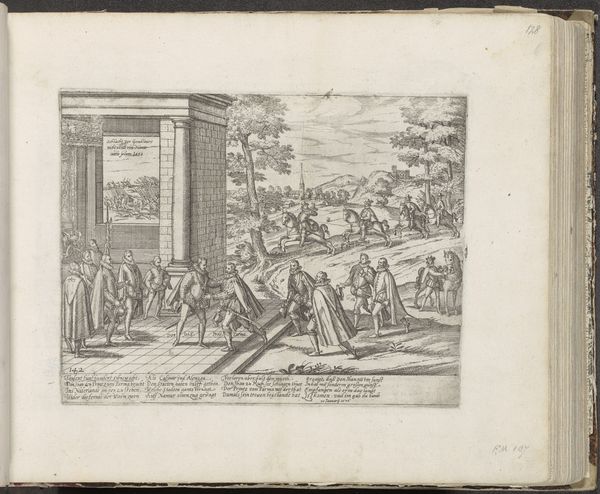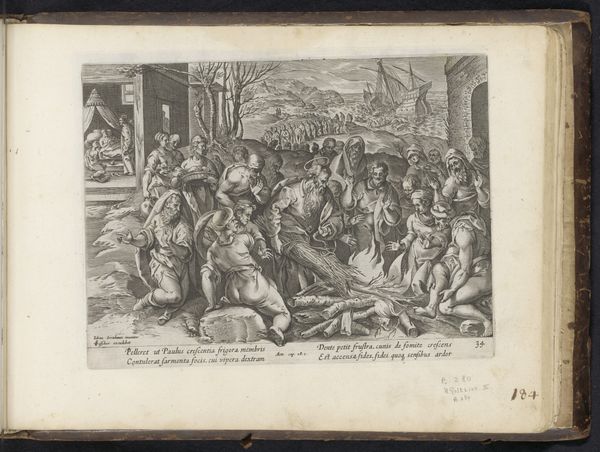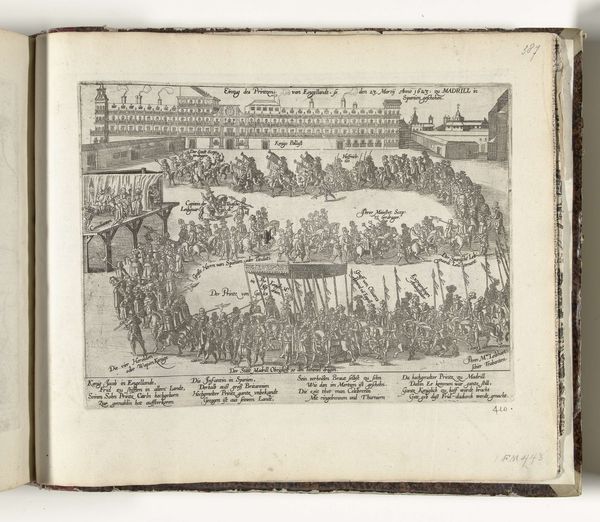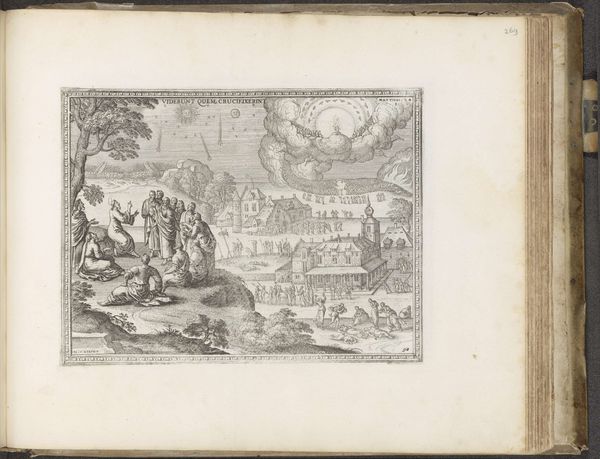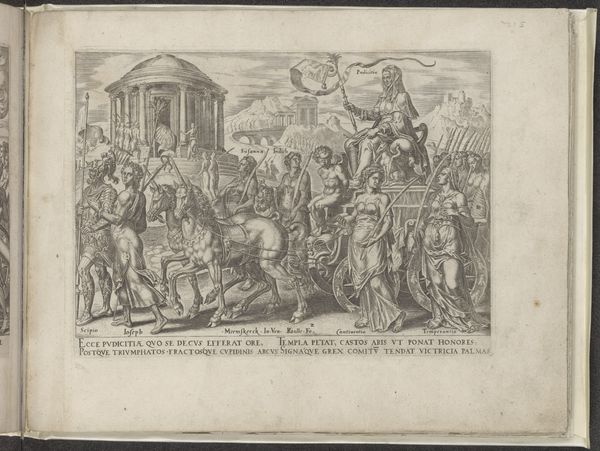
Lot van de nakomelingen van Saul / Lichamen van Saul en Jonatan / Volkstelling in opdracht van David / David heeft de keuze uit drie straffen 1575 - 1654
0:00
0:00
print, engraving
#
narrative-art
#
baroque
# print
#
geometric
#
history-painting
#
engraving
Dimensions: height 107 mm, width 143 mm, height 108 mm, width 140 mm, height 107 mm, width 140 mm, height 108 mm, width 140 mm
Copyright: Rijks Museum: Open Domain
Curator: This engraving from the late 16th to mid-17th century, credited to Johann Sadeler I, depicts four narrative scenes related to Saul and David. It's currently held at the Rijksmuseum. Editor: The sheer detail of the engraving is striking. What I’m really curious about is how prints like these circulated and were consumed at the time. What do you think, seeing as this is more than a simple illustration, but an entire page, perhaps part of a book? Curator: That's the crucial question. Looking at this, it's impossible to ignore the material conditions of its creation and reception. These engravings weren't meant to be isolated artworks, were they? Editor: Precisely. It was meant to be part of something larger... Curator: How might the narrative, biblical in theme, relate to socio-political concerns? Consider this book as a commodity, aimed at specific demographics. Were these readily available or more of a luxury item? Editor: Considering the period, with its religious wars and social stratification, perhaps this book offered moral lessons on power and humility for wealthy families with enough access to afford them. Is it that Sadeler uses an earlier source for these engravings, essentially becoming a craftsman repurposing images. The Baroque style might reflect an intended message or moral for the ruling classes, and therefore served as propaganda? Curator: The materiality of this engraving, then, serves as evidence. It embodies not just religious allegory, but also complex relations between artists, patrons, and audiences within the very economic fabric of that era. And the medium, being reproducible, grants it a different social power compared to singular artworks like painting or sculpture. This impacts consumption... Interesting, no? Editor: Absolutely! It reframes my understanding. It makes you consider it’s no longer about individual authorship or aesthetics, but instead, who was really driving its production and the bigger social role these books played. I find that the material conditions of this object shape its purpose to its culture!
Comments
No comments
Be the first to comment and join the conversation on the ultimate creative platform.
